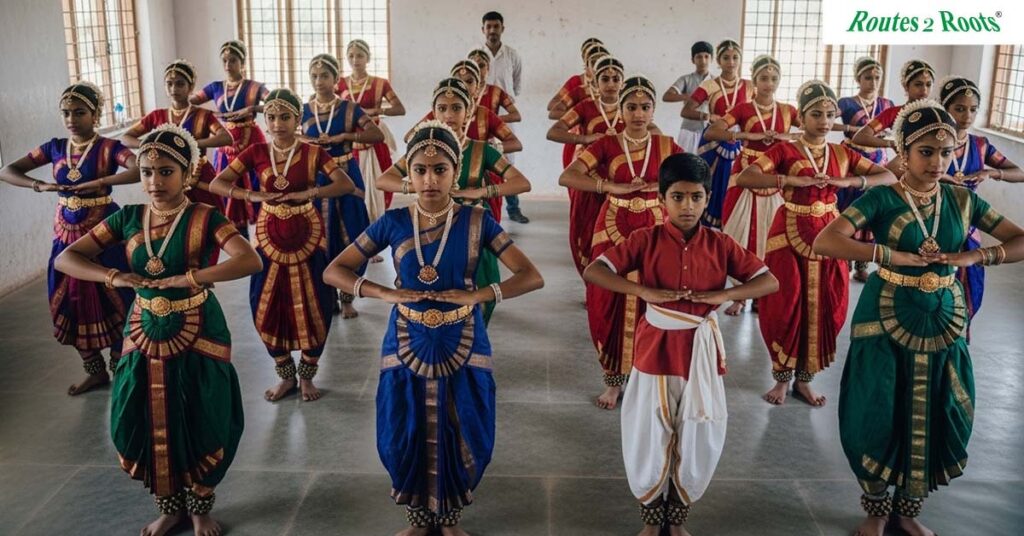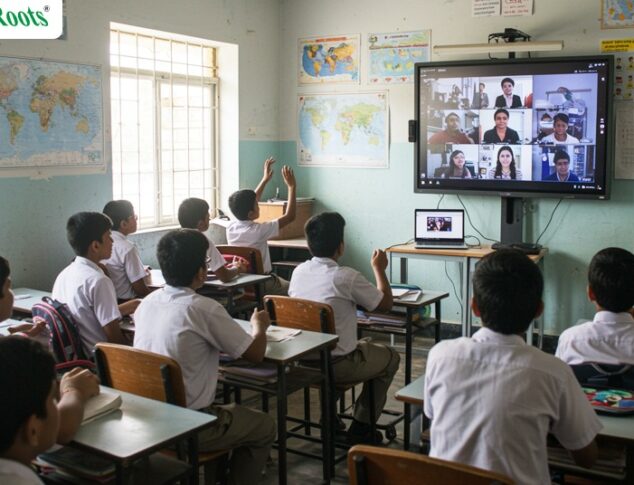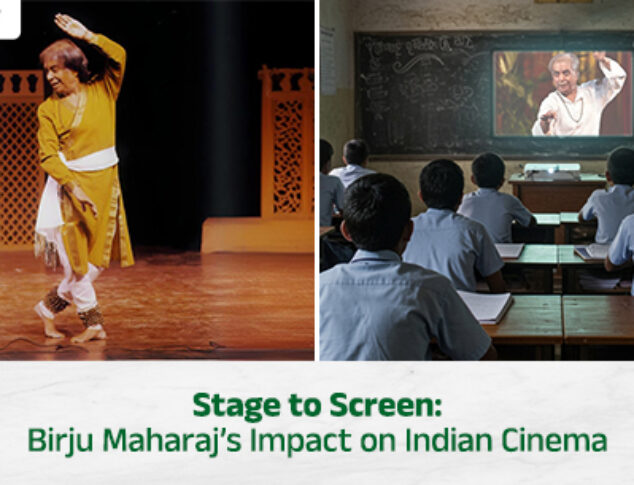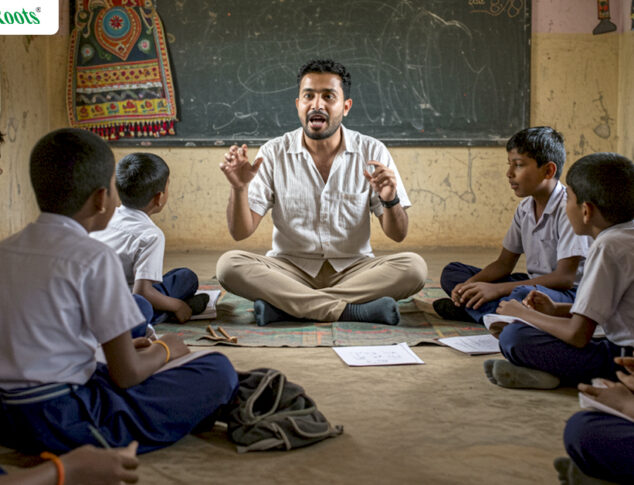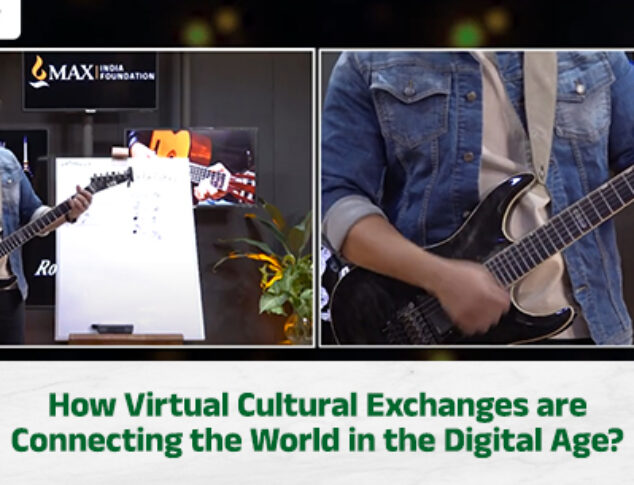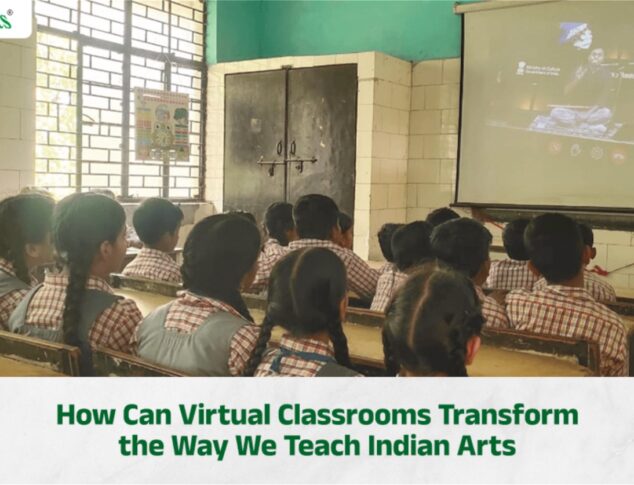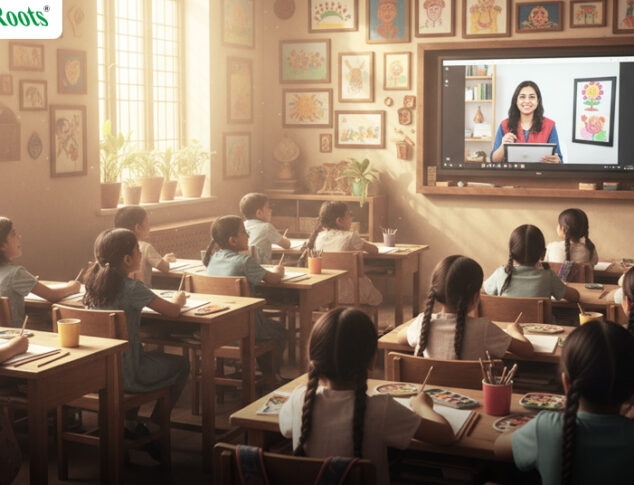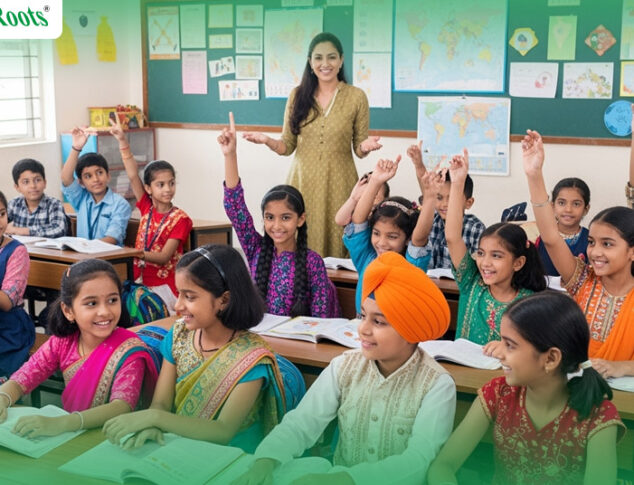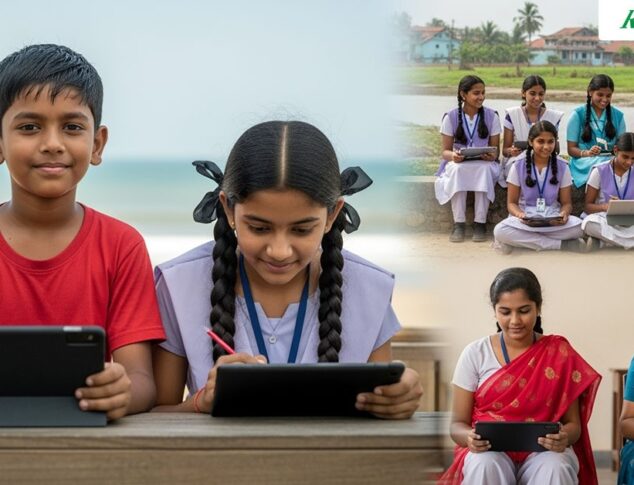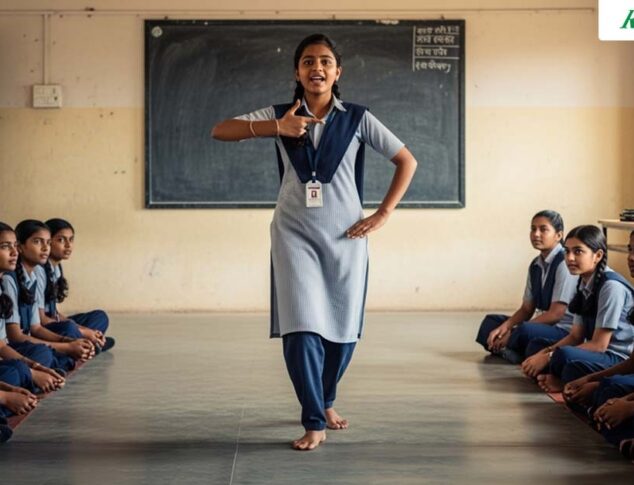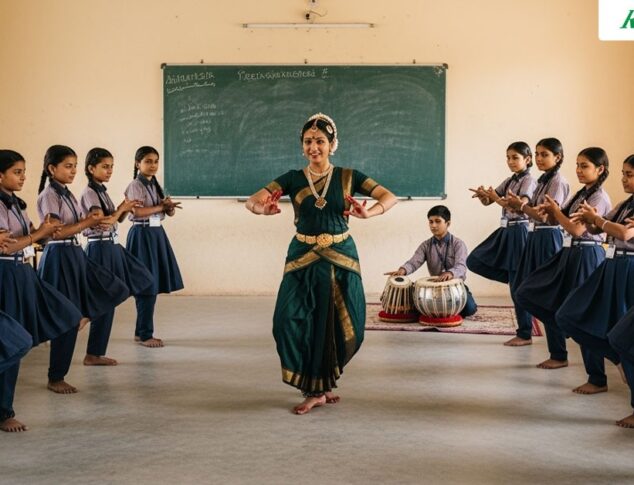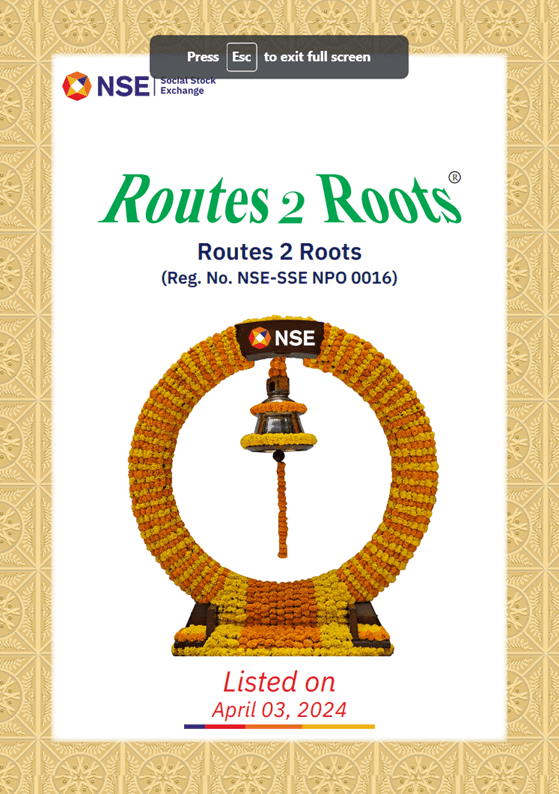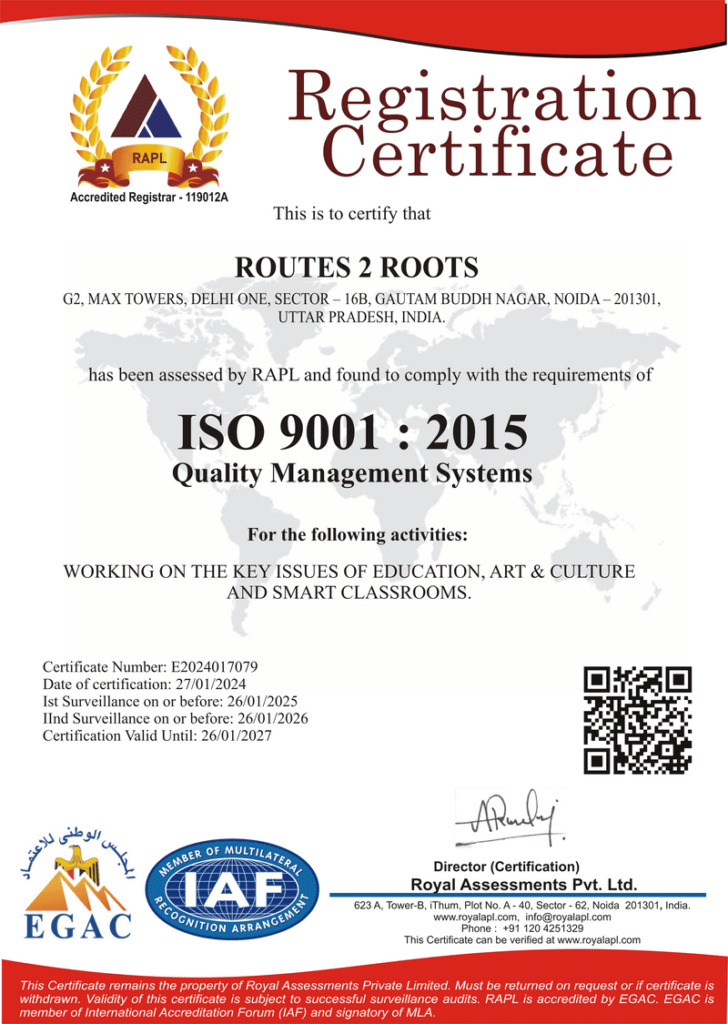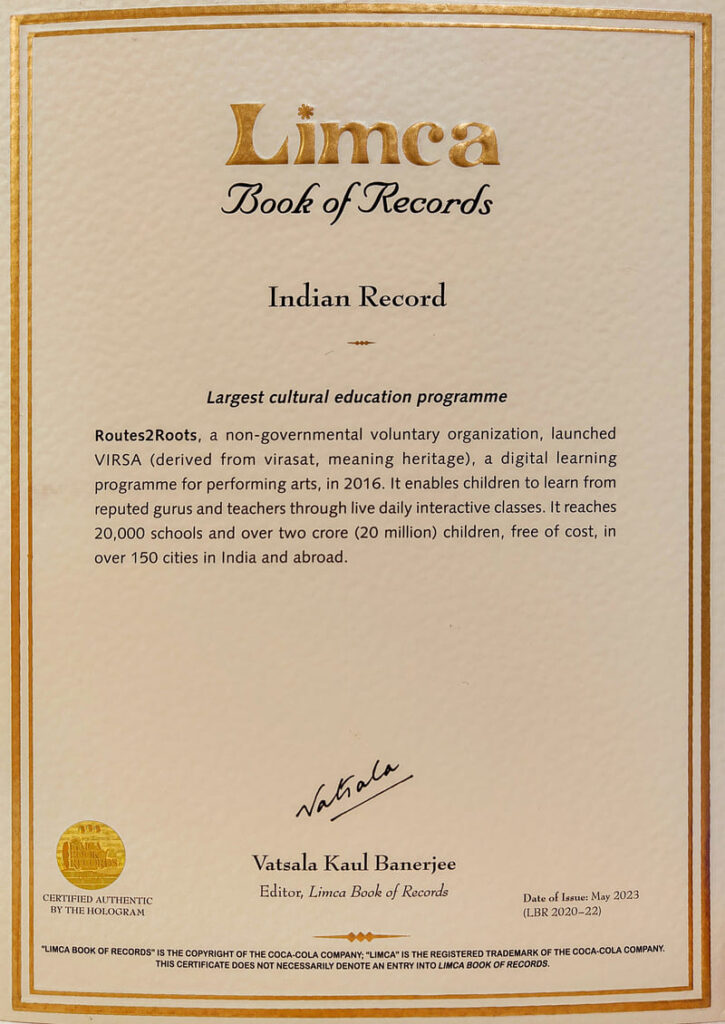Beyond the Stage, Into Real Life
When we think of Indian classical arts like Bharatanatyam, Kathak, or Carnatic vocals we often picture stage lights, applause, and graceful movements. But hidden beneath the performance lies a deeper kind of learning: one that shapes character, discipline, and resilience. For many students in India, especially those engaged through NGOs like Routes 2 Roots (R2R), these traditional art forms are also life coaches in disguise.
As a respected cultural NGO in India, R2R helps thousands of children across government, KV, and JNV schools discover not just art but the values that come with it.
When we think of Indian classical arts like Bharatanatyam, Kathak, or Carnatic vocals we often picture stage lights, applause, and graceful movements. But hidden beneath the performance lies a deeper kind of learning: one that shapes character, discipline, and resilience. For many students in India, especially those engaged through NGOs like Routes 2 Roots (R2R), these traditional art forms are also life coaches in disguise.
As a respected cultural NGO in India, R2R helps thousands of children across government, KV, and JNV schools discover not just art but the values that come with it.
Discipline That Starts With a Beat
Classical Indian art forms demand structure. A raga has rules. A mudra has meaning. A dance sequence requires repetition and stamina. Through these frameworks, students learn the power of consistency and effort.
This isn’t rote discipline, it’s joyful rigor. When students practice the same note or move for weeks to get it just right, they internalize a growth mindset: that excellence takes time, and it’s worth it.
Respect and Humility in the Guru-Shishya Tradition
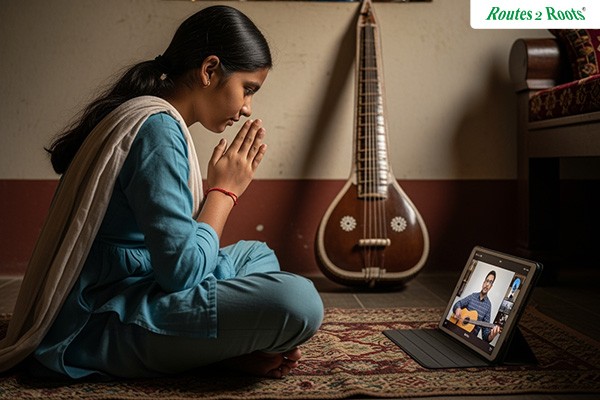
Traditional Indian learning emphasizes the guru-shishya (teacher-student) bond. In R2R’s programs both physical and digital this tradition is carefully preserved. Students don’t just learn from instructors; they develop a sense of deep respect for them. They bow before beginning, they listen with intent, and they respond with gratitude.
This culture of respect often extends beyond the art form. Students become more attentive in school, more thoughtful in interactions, and more grounded in their relationships.
Learning the Language of Patience
In a world of quick results, Indian classical arts teach slow mastery. You don’t become a singer in a week, or a dancer after one performance. Through this journey, students understand that success whether academic or personal is built through patience.
This lesson is especially transformative for underprivileged children, who often grow up with limited access to structured extracurricular activities. R2R’s cultural education programs offer them not just new skills, but a mindset of perseverance.
Cognitive Benefits Behind Every Step and Sound
Science supports what tradition has known for centuries: performing arts boost memory, focus, and creativity. When students learn complex talas or choreograph a fusion performance, they’re using both logic and imagination. It’s a full-brain workout and one that improves academic performance too.
Through the digital learning art program by R2R, these benefits are now available even in remote parts of India. Whether on a tablet in Jharkhand or a smartboard in Jammu, students are sharpening their minds while celebrating culture.
Expressive Tools for Emotional Growth
Arts offer an emotional vocabulary. For many children, especially those facing social or academic pressure, music and dance become healthy outlets for stress and emotion. In theatre, they learn empathy by stepping into someone else’s shoes. In music, they process emotions through melody.
These aren’t just hobbies, they’re tools for lifelong emotional well-being. R2R’s programs offer structured ways for children to express, reflect, and grow.
A Value System That Travels Far
Indian arts are deeply intertwined with values. Themes of honesty, justice, love, sacrifice, and truth run through traditional dance dramas and songs. When children learn these art forms, they’re not just performing, they’re absorbing a cultural value system.
This shapes future citizens who are not only skilled but also compassionate, ethical, and self-aware.
The Ripple Effect in Families and Communities
What begins in a classroom often spreads to homes. Parents of students involved in R2R’s programs report improved behavior, better communication, and more family engagement. Cultural pride returns to dinner tables, and children become ambassadors of their traditions.
As a listed NGO in India, Routes 2 Roots not only preserves art, it revitalizes communities through the invisible curriculum of values and skills.
A Curriculum for Life
While exams test memory, Indian classical arts build character. And in a fast-changing world, that character is the anchor students need.
Through its cultural education programs, R2R is quietly rewriting what education can mean in India placing tradition, empathy, and self-discovery at the center.






